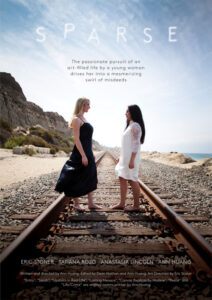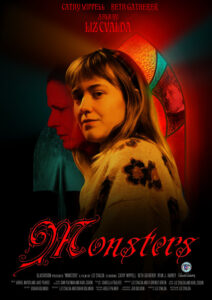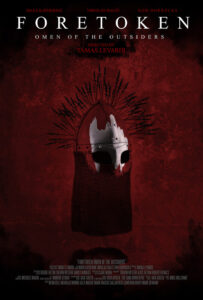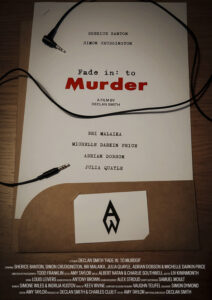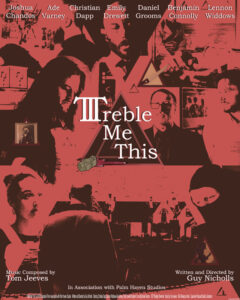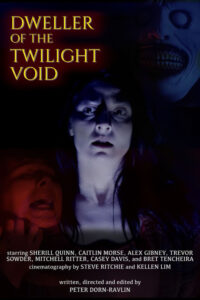
ELLY CHO
Elly Cho has exhibited around the world and holds numerous awards. Her art explores the intersection between nature, the environment and human behaviour, across various mediums including mixed media, video and performance art.
Cho’s approach to art making, is largely inspired by the relationship between nature, environment and the viewer’s perception to nature based on their personal history.
She approachs the subject matter of cultural landscapes in narrative form, and these narratives often relate to her own life experiences and memories. In her video work, She has used familiar landscapes that stimulate viewers to engage with an imaginative response.
Cho’s awards include Sunny Art Prize in London, Award Winner of The Best Silent Film, Best Dance Choreography Film, Best Experimental Film and Best Director at New York International Film Awards, ARFF Berlin ARFF Barcelona /Around International Film Festival, Oniros Film Awards, Best Actor &Director Awards New York among others. Her work has screened at film festivals such as ‘AVIFF’ Cannes Art Film Festival and Asia Film Art International Film Festival in Hong Kong and “Times Square Midnight Moment” in New York. Her residency participation includes the 3-D Sculpture Park artist residency program in Switzerland and AHL Foundation Residency in New York.
Her works are featured in major collections such as Seoul Municipal Museum and Musée Cantonale des Beaux-Arts du Valais in Switzerland, and in exhibitions such as ‘Nature’s Tempo’ at the Korean cultural services of New York, and ‘Going Green’ in conjunction with Queens Art Express in New York. She is passionate about performance art, projects include ‘Sounds of Fragment: Ecological Dreams’ at the Nam June Park Art Center and Seoul Innovation Park.
Cho holds a BA and MFA from the Slade School of Fine Art in London and an MA in Art Education from Columbia University. After obtaining her MFA, she taught visual art courses as well as theory at universities in Korea.
[MIS] Since the age of 5, your dream has been to become a painter. What brought you to filmmaking?
[Elly] As a visual artist, I explore the intersection between nature, the environment, and human behaviors across various mediums, including mixed media, video, and performance art. I started using film as a medium to depict the nature–environment–human behavior relationship. Throughout my artistic career, I have worked as a video artist, and I can now think about the video work from a film maker’s perspective as I continue making film/video. I focus on film making while learning new ways to tell a story. I always learn new things during the process of creating artworks. I am excited to continue growing during this journey.
[MIS] Who are your filmmaking influencers?
[Elly] I look at varous artists as a reference when I am working on a project, including painters such as Marc Chagall, Francis Bacon, and Mark Rothko, video artists such as Nam June Paik, philosophers such as Immanuel Kant and Gille Deleuze, film directors such as Peter Greenaway for his provocative aesthetics, and actors such as Ewan McGregor. I was really inspired by the film The Pillow Book, one of Greenaway’s most powerful films, which explores desire, pleasure, and love. I also like Baz Luhrmann, Jean-Luc Godard, and Tim Burton.

[MIS] What’s the message behind Island and why did you choose this title?
[Elly] I wanted to create a dance piece that is so unreal in the sense that I had been experiencing a repeated life cycle on three islands: London, Manhattan, and Jeju Island. I use dance as a means of communication and hope, bringing out repressed and unconscious inner conflicts caused by life events. I think the pandemic forced me to plan the piece and turn it into an actual artwork. During the pandemic, I felt the urge to create a piece that relates to the repeated daily life cycle but, at the same time, Island is a cross-concept of reality and fantasy/paradise.
Set among the islands in three different countries, Island is the story of my journey to rediscover who I really am. This deep and affecting journey of self-discovery touches on issues of loneliness, isolation, and the perseverance of the human spirit.
Island is both a place in life and a journey, during which I experienced paradoxical feelings between relief and discomfort from being trapped between fantasy and reality in life. The dancer in this video is constantly looking for something, as if she will never find that tangible hope empowered by nature.
[MIS] You mixed media, including video, performing art, and music. Can you tell us more about that choice?
[Elly] I used performance in this film because of the nature of the dance piece and my desire to express “life on an island” as a theme for the choreography. Every time you perform a piece, it differs to some degree. This aspect is very similar to life: You perform the same actions every day, but if I were to live in London again today, I would have different experiences than when I was in my 20s.
So filming the same movement again and again was an act of experiencing different movements for my entire team and myself. It was filmed underwater, and the condition of the performer (dancer) relied on the dance movements a lot. It was an interesting experience working on this project.

[MIS] What was the purpose behind your choice of lighting, knowing that you used a cold color palette?
[Elly] For this film, I thought mainly about the dance movement and the concept of life. The color palette is limited in a sense because I didn’t try to mix anything except dance and the movement in the space where it was filmed. I could have mixed the film with other objects or scenes with more colors, but I wanted it to be more of a performance piece from the beginning—a performance that you could only see on the screen rather than live. It is like seeing the life of a person through this one woman’s performance, which she expresses through body movement. Gravity is a force she has to fight throughout the film as a means to survive.
[MIS] Regarding the editing of Island, you combined split screens, black screens and parallel montage. From where did you get the inspiration?
[Elly] Using split screens, I wanted to metaphorically connect the dancer to the places of her memories to revisit her history. I feel more comfortable working with multiple screens than just a single screen in general because I can play around with time and space. However, in this film, I wanted to create a dialog between the screens depicting the thoughts of the characters of the film while making the story more interesting by incorporating different colors of costumes to suggest that the dancer is in different time zones. The two screens suggest sort of a mix of ancient and modern periods, connecting her history through dance movements. Multiple screens create their own narratives and tensions. They not only tell the story about my thoughts and feelings, but also bring my memories into the realm of the senses, as such scenes put the subjects in a dream-like context.
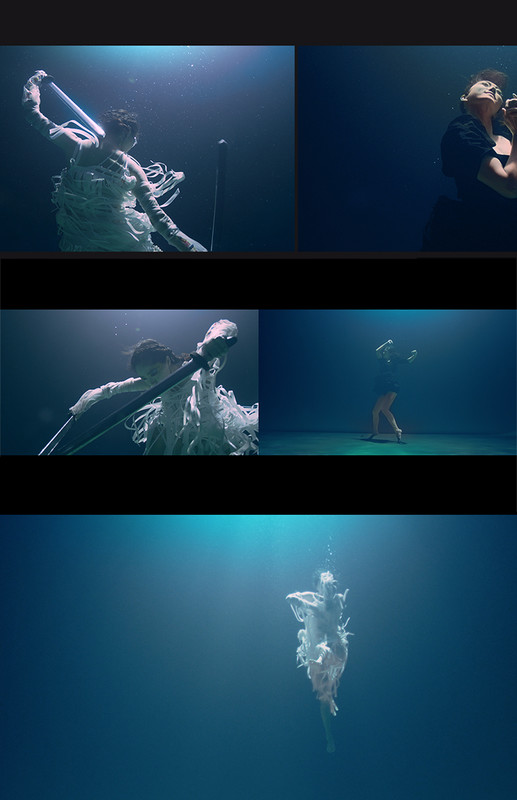

[MIS] Do you think that silent films are more powerful than films with cinematic dialogue?
[Elly] Silence is a natural language in a film for me. I feel it makes it easier to compose a story using only the movement of actors, nature, and a sense of a place, which is usually composed of landscapes. However, in this film, I wanted to depict the story only though a dance performance, giving a sense of a place in the sea and the pool. Although I don’t clearly allude to the historical background (landscapes of places), the views depicted are the sort I find in the aesthetic of that particular space.
I sometimes use words in my works, but they are usually about history or current affairs and seek to create a discourse. Silence for me is like a brush with which I create a painting. It speaks its own language in my film, and with dance movements it completes the film with its own colors.
I think cinematic dialogue is powerfiul in its own way. It is simply a different language expressing the tone of the film and the story. I am more of a visual person than a traditional filmmaker, but as I mentioned, I need words in certain types of films, such as historical films.
[MIS] The underwater choreography by Byungwha Kim was performed amazingly. What can you tell us about that challenge?
[Elly] Yes, it was done amazingly well, although she said it was quite challenging. I had a hard time finding the right professionals with experience dancing underwater. I am hugely grateful to her for doing such an amazing job. We worked almost every day, going through my visual sketches and how she can create the feelings and tones of the specific movement I wanted, and then she created a beautiful dance movement capturing Korean traditional dance with swords and mixing it with modern dance. I wanted the mix between Korean and modern dance because my inspiration started from the classic/modern dance I visualized, which was inspired by a sword in a European book. I used two swords because, when I was doing research for this project, I found traditional Korean dances were done with two swords. We played around with one sword, two swords, and no swords. The dancer found it easier to work with no sword during some movements because of the underwater gravity.
Trailer ISLAND
[MIS] How would you describe your short film Island in two words?
[Elly] In two words? Dance painting. It is a silent journey that paints a personal life story through movements. It is a sort of drawing in the water, with movements setting the tones and colors.
[MIS] After the movie is done shooting, is the final picture the same as you visualized before its conception?
[Elly] I usually have a visual layout for the specific concept before starting a new project. As I go through the process, I develop a clear picture before finalizing it. So, yes, I would say that it is almost the same as when I visualized the concept in the beginning. I think it also has to do with the team’s work. It has sometimes been challenging to find team members, but I am getting better at pulling together the right team. I hope to make better projects by working with a producer, which would make things easier. I am currently looking for a producer for my upcoming documentary film and my dance film. They will be my first feature films.
[MIS] What advice would you give to aspiring filmmakers?
[Elly] I would recommend watching a lot of films and thinking about the concept while doing a sketch of their project. Try to be open-minded to various visual inspirations. Go to a lot of art exhibitions and watch films. Inspiration can come from many different parts of life. For me, it mostly comes from art, including paintings, sculptures, and video works and films.

[MIS] What kind of films would you like to make in the future?
[Elly] As I mentioned, I am preparing for my documentary film and my dance film. These are two separate projects, but they will relate to each other. The documentary film will also have dance in it. I would like to make a documentary film that impacts people’s minds in a way that can transform or help their lifestyles.
As I am also working on my first feature film, I am learning new strategies to produce it. The film will be a musical in the sense that it will contain both the sounds of nature and music as well as a mixture of body movement and interviews with people. The audio-visual medium can play a strong role in transgressing spoken language by incorporating the sounds of nature and using memory as a flow of consciousness, mixing the music as a source of dialog between the subject and the places. All these elements will play a role in highlighting the need to change, transform, and act on the climate challenges. These are my goals for the film, but I will have to work on it further to discover its needs in order to develop the concept and the visuals.
[MIS] What are your future projects?
[Elly] I am currently researching climate change and its relationship to an extinction crisis to make a documentary film about these issues. I have also been experimenting with body movement and dance in my video work in my artistic career. I have produced a number of works using dance, music, and dialog related to the existence of beings, ecology, and humanity. My feature film will relate to these subjects, focusing on an extinction crisis and how body movement connects to the surrounding nature. I am in the research stage now.
[MIS] Any final thoughts?
[Elly] Thank you for the great interview questions. They have really helped me to dive deeper into my thoughts about my ideas and my future projects.
